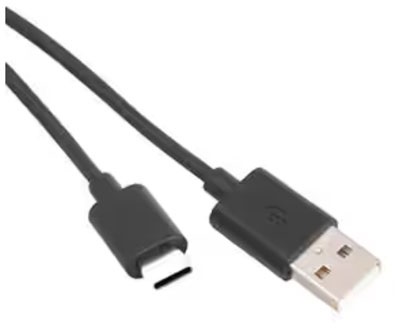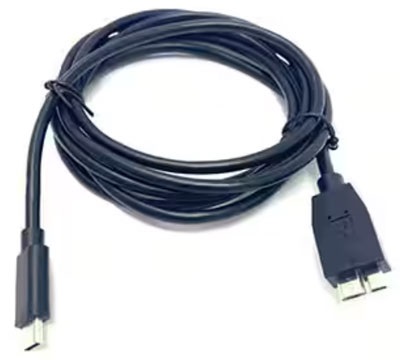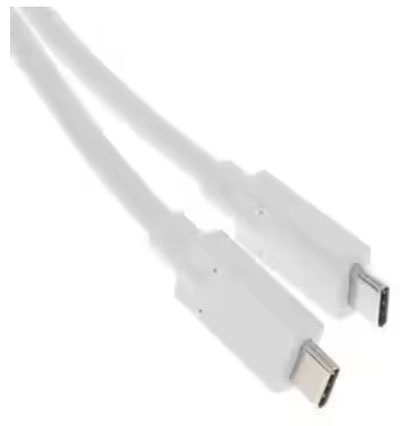nderstanding USB specifications to select appropriate cables, plugs, and sockets
Time:2024-04-24
Views:149
Author: Terry Persun
USB (Universal Serial Bus) cables, connectors, and sockets are widely used in various industrial applications, such as industrial sensors, control modules, electronic signs, cash register terminals, etc. The key to choosing the right product for an application is to remember that different generations of USB devices directly affect performance.
For a long time, USB has been the standard for connecting all devices such as keyboards, mice, cameras, phone chargers, computers, and wall adapters. These connectors are used to transfer data and electrical energy between devices. Early USB cables and connectors could only transmit data at a low speed of up to about 12 Mbps, until the release of USB 2.0 in 2000. Since then, people have been pursuing faster device speeds, and demand has grown rapidly.
This article discusses the necessary detailed knowledge of different types of USB connectors and cables and their functions to provide the information needed to make the right choices for specific applications.
USB version and its functions
USB 2.0 provides users with a speed of 480 Mbps, which is 40 times faster than the first generation USB provided in the 1990s, which can only handle 12 Mbps. The new version is designed with four connecting cables, which can be used to interconnect devices with cables up to 30 meters long. Although people believe that such cables can transmit data at high speeds, they do not support video. These connectors and cables can support power supplies with currents up to 500 mA, while older versions do not. In a four wire cable, the white and green wires are used for data transmission, and the red and black wires are used for power supply: the red wire is a 5 V power supply wire, and the black wire is a grounding wire. The internal color of the USB 2.0 interface is black, making it easy to recognize. At that time, these updated USB features provided greater flexibility for various applications and are still applicable today.
Eight years after the release of USB 2.0, USB 3.0 was introduced. The 3.0 version provides users with faster data speeds, more precisely 10 times faster, and is considered an ultra fast device. These cables and connectors support video data transmission. The design data transfer speed of USB 3.0 cables and connectors is 4800 Mbps (close to 5 GB). When used for backing up or transferring large amounts of data in hard drives or controllers, this ultra fast transfer speed can come in handy. The added jumper is used to provide two-way communication simultaneously. Professional photographers are enthusiastic about using USB 3.0 connectors because they need to transfer high-resolution images between multiple devices and upload these images to high-speed network computers.
Although the 3.0 USB version is faster, it can only interconnect devices within an 18 meter cable range. Unlike the four wire connector of USB 2.0, this version uses a nine wire connector, providing a suitable environment to improve the processing speed and bandwidth required by the device. This technology also allows cables and connectors to be compatible with currents up to 900 mA and can provide higher energy efficiency for high power consuming devices.
It is worth noting that the USB 2.0 standard version connector and USB 3.0 standard connector offer completely different specifications. Therefore, it is necessary to ensure that the target application matches the specific functions of the USB connectors and cables you plan to use. The USB 2.0 connector is easy to identify because the USB 2.0 port is black, while the USB 3.0 port is blue. USB 3.0 devices are backward compatible and can be used in conjunction with other USB versions, such as USB 2.0. However, the connection speed will be limited by the maximum speed of USB 2.0. By around 2012, USB 3.0 had been used on all newly launched computers and had become a manufacturing standard. These devices are ubiquitous in most industries, from sensors and transmitters to data hubs, controllers, and computers, and can be connected using USB cables.
USB cable and jumper components
GlobTek, Inc. offers a complete set of USB cables and patch cord components with various configurations and combinations, including non-standard configurations based on customer specific application requirements.
The company‘s full range of USB cable components comply with USB 2.0, USB 3.0, and/or USB 3.1 standards, and offer various shielded and unshielded lengths. Other cable connector options are also available, such as DC power plugs and blunt cut or peeled and tinned terminals. The cable components are wrapped in PVC or TPE halogen-free sheathing materials. In addition, customized USB connector housings with additional features can be provided upon request.
For cable and jumper components, GlobTek, Inc. offers various lengths and colors of 100mm and above, suitable for sensitive devices that require rapid visual recognition. Many ready-made products have standard terminals, plugs, and sockets installed.
USB interface types have specific uses in most commercial and industrial environments. For example, USB Type-A is used in conjunction with a power outlet and computer to charge devices. Due to the fact that these connectors and cables (such as USBA2C1MOUSBCR shown in Figure 1) can only be inserted into the device port in one direction, it is not easy for users to connect them incorrectly. The USB Type-B port is typically used to connect peripherals (such as printers, scanners, and external hard drives) to a computer or controller. These connectors are not as common as general-purpose connectors.


ure 1: The diagram shows USBA2C1MOUSBC (R), which is a USB 2.0 Type-A male to Type-C male cable with a 1.00 meter unshielded cable. The USB Type-A connector can only be inserted into the device port in one direction, so users will not connect it incorrectly. (Image source: GlobTek, Inc.)
As shown in Figure 2, USBCM302M0MICBMMBKR and other products are used for mobile devices such as smartphones, tablets, MP3 players and cameras, as well as portable instruments or control units used in industrial environments. In applications such as flash drives or memory sticks directly connected to devices, USB Type-B micro allows data to be read without being connected to a computer. Similar to Type-A connectors, these devices can only be inserted into ports in one direction, otherwise damage may occur.


Figure 2: The diagram shows USBCM302M0MICBMKBR, a USB Type-B micro male to Type-C male cable with a 2.00 meter shielded cable. It is typically used to directly connect devices to flash drives or memory sticks without the need for a computer connection. (Image source: GlobTek, Inc.)
The latest connector device is USB Type-C. This type of connector and cable (USBCM311M0USBCMMMWHR as shown in Figure 3) is designed for high-speed data transmission and higher current, allowing devices to charge faster. Unlike other USB Type connectors, USB Type-C can be inserted into devices in both directions.


Figure 3: USBCM311M0USBCMMMWHR is a USB-C male to USB-C male cable with a 1-meter shielded wire, capable of processing data rates of 10Gbps. (Image source: GlobTek, Inc.)
summary
USB connectors and cable components are indispensable components in daily life. These components have entered almost every household, used to interconnect laptops and desktop computers with multiple peripherals, as well as connect phones and tablets to the power supply. In addition, USB components are also used in the field of automation, which requires computers to be able to perform high-speed data transmission with remote sensors and transmitters.
|
Disclaimer: This article is transferred from other platforms and does not represent the views and positions of this site. If there is any infringement or objection, please contact us to delete it. thank you! |











